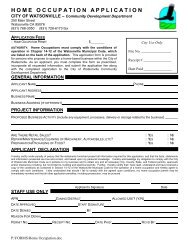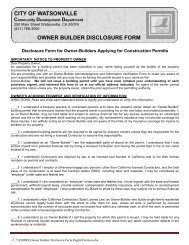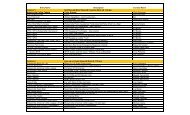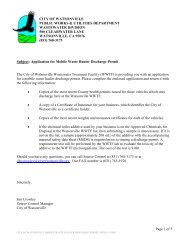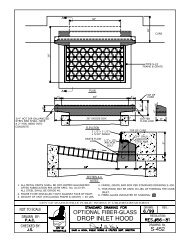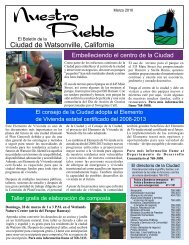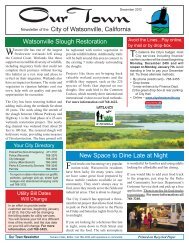Vegetation Management and Maintenance Plan - Watsonville ...
Vegetation Management and Maintenance Plan - Watsonville ...
Vegetation Management and Maintenance Plan - Watsonville ...
You also want an ePaper? Increase the reach of your titles
YUMPU automatically turns print PDFs into web optimized ePapers that Google loves.
CHAPTER 2.0<br />
INTRODUCTION TO WEEDS<br />
Weeds, in general, are defined as plants growing in an area where they are not indigenous. Some<br />
botanists <strong>and</strong> l<strong>and</strong> managers also refer to these plants as non-native. Many weeds are of European<br />
origin having entered the United States with early European explorers. In California, many weed<br />
species were also introduced during the Spanish <strong>and</strong> Mexican occupation periods, particularly at<br />
coastal sites <strong>and</strong> around settlements (Brossard, R<strong>and</strong>all <strong>and</strong> Hoshovsky 2000). Non-native plants<br />
came into California on grazing animals, in livestock feed, ship ballast, <strong>and</strong> through the transport<br />
of ornamental <strong>and</strong> crop plants. Non-native plants continue to enter California from the<br />
international transport of economic goods, the global plant trade, <strong>and</strong> tourism.<br />
Currently, it is estimated that over 1,800 non-native plant species have become established in<br />
California, with a minority of these species (approximately 200) having escaped cultivation <strong>and</strong><br />
invaded into natural areas (Cal-IPC 2006). In instances where a plant to found to be<br />
“troublesome, aggressive, intrusive, detrimental, or destructive to agriculture, silviculture, or<br />
important native species, <strong>and</strong> difficult to control or eradicate” the plant has been identified by the<br />
California Department of Food <strong>and</strong> Agriculture (CDFA) as a noxious weed (CDFA 2007). The<br />
CDFA rates each species based on its statewide importance, the likelihood of successful<br />
control/eradication, <strong>and</strong> the species distribution in the state.<br />
In a similar manner, the California Invasive <strong>Plan</strong>t Council (Cal-IPC) has identified plant species<br />
that displace native species <strong>and</strong> negatively affect natural systems as invasive species. Cal-IPC has<br />
developed it own ranking system that identifies a species invasive qualities as well as its negative<br />
effect on native ecosystems.<br />
2.1 STATE NOXIOUS WEEDS AND THREATS<br />
The state’s Noxious Weed List identifies plant species that are currently considered a pest<br />
according to laws/regulations in the California Food <strong>and</strong> Agriculture Code. <strong>Plan</strong>ts are rated as A,<br />
B, C, or Q, to give guidance on the most appropriate action to take against the weed species, as<br />
depicted on Table 1. Presently, there are 134 plant species considered noxious weeds in<br />
California.<br />
Table 1. Rating <strong>and</strong> Guidelines for Action for California Noxious Weeds<br />
Pest Rating Appropriate Action Number of <strong>Plan</strong>t<br />
Species Listed<br />
A Eradication, containment, rejection or other holding action at the<br />
45<br />
state-county level; quarantine possible.<br />
B Eradication, containment, control or other holding action at<br />
54<br />
discretion of County Agricultural Commissioner.<br />
C State endorsed holding action <strong>and</strong> eradication if plant found in a<br />
24<br />
nursery; action to retard spread of plant outside nursery at<br />
discretion of County Agricultural Commissioner.<br />
Q Temporary A action outside of nurseries pending determination of 11<br />
a permanent rating; This rating includes al List 2, Federal Noxious<br />
Weed Regulations.<br />
D No action 0<br />
Total 134<br />
Source: CDFA 2007<br />
<strong>Vegetation</strong> <strong>Management</strong> <strong>and</strong> <strong>Maintenance</strong> Manual<br />
Draft 7 July 27, 2007




